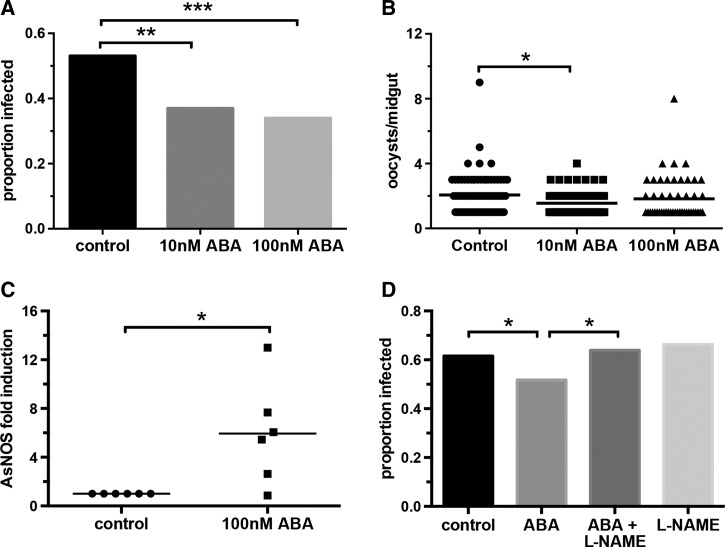Figure 6.
Abscisic acid (ABA) supplementation of a Plasmodium falciparum-infected blood meal reduced infection prevalence in Anopheles stephensi by increasing nitric oxide production. (A) Mean proportions of mosquitoes that became infected upon feeding on P. falciparum-infected blood meals supplemented with 10 nM ABA, 100 nM ABA, or with an equivalent volume of diluent as a control. Bars represent four replicates with separate cohorts of mosquitoes. Data were analyzed by Fisher's exact test. (B) Oocysts per midgut of mosquitoes that were infected; medians are shown. Data were analyzed by the Kruskal–Wallis test followed by Dunn's multiple comparison test. (C) Fold change in An. stephensi nitric oxide synthase expression in the midgut of mosquitoes fed a P. falciparum-infected blood meal supplemented with 100 nM ABA. Each dot represents a replicate of 10 pooled midguts. Data are shown as fold change (2ΔΔCt) in gene expression relative to control-supplemented P. falciparum-fed mosquitoes. Data were analyzed by one-sample t test. (D) Mean proportions of mosquitoes that became infected upon feeding on P. falciparum-infected blood meals supplemented with 100 nM ABA, Nω-Nitro-l-arginine methyl ester (l-NAME), 100 nM ABA + l-NAME or an equivalent volume of diluent as a control. Bars represent four replicates with separate cohorts of mosquitoes. Data were analyzed by Fisher's exact test. * P ≤ 0.05, ** P ≤ 0.01, *** P ≤ 0.005.

